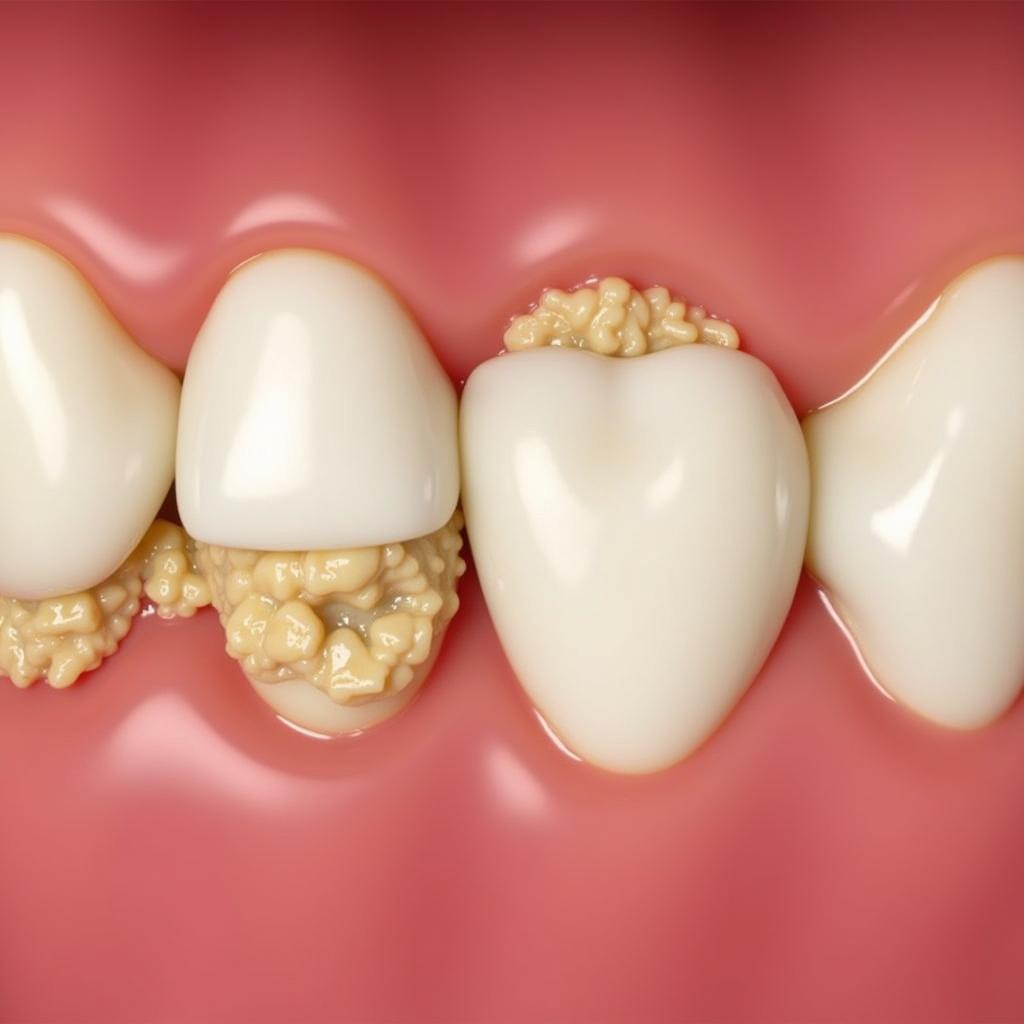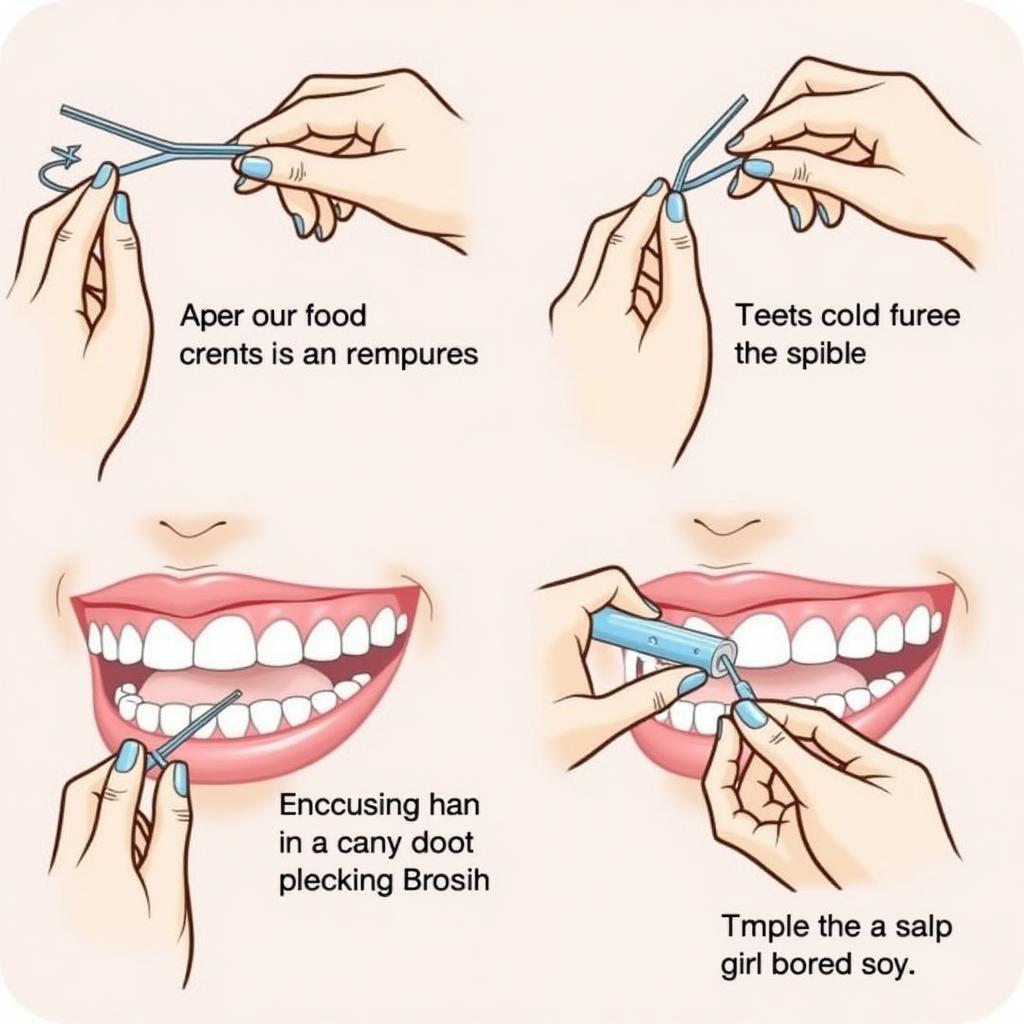We’ve all been there. Enjoying a delicious meal, maybe a bit too enthusiastically, and then it hits you – that unmistakable feeling of something stuck in your teeth. It’s usually a tiny piece of food lodged in a tooth crevice, yet it can feel monumental in the moment. Suddenly, that delicious meal loses its appeal as you become preoccupied with discreetly dislodging the offending particle.
 Food particles stuck between teeth
Food particles stuck between teeth
The Anatomy of a Tooth Crevice
Our teeth aren’t perfectly smooth surfaces. They have tiny grooves and ridges, and the spaces between our teeth create perfect little pockets for food particles to get wedged in. These spaces, often called tooth crevices, are prime real estate for food debris, especially after meals with fibrous vegetables, meats, or sticky treats.
Why We Can’t Just Ignore It
While it might seem like a minor annoyance, leaving food stuck in your teeth can have consequences beyond just the uncomfortable feeling.
Bad Breath
Trapped food particles begin to decompose, leading to bacteria growth. This bacterial activity produces sulfur compounds, which are notorious for causing bad breath.
Plaque Buildup
The bacteria feeding on the trapped food contribute to the formation of plaque, a sticky film that clings to your teeth. Plaque buildup leads to tooth decay and gum disease if not removed regularly.
Gum Irritation
When food gets stuck below the gum line, it can irritate the gums, leading to inflammation, redness, and even bleeding.
 Using dental floss to remove food from between teeth
Using dental floss to remove food from between teeth
How to Safely Remove Food from Tooth Crevices
The good news is that removing food stuck in your teeth is usually a simple process. Here are a few effective methods:
- Flossing: Dental floss is your best bet for reaching those tight spaces between your teeth. Gently guide the floss between the teeth, curving it around each tooth and sliding it up and down a few times to dislodge the food.
- Water Flosser: A water flosser uses a stream of pressurized water to flush out food particles. It’s a good option for people with braces or dental work that makes flossing difficult.
- Toothpick: While not as effective as floss, a toothpick can be helpful for dislodging larger pieces of food. Be careful not to poke your gums.
- Interdental Brush: These small, specially designed brushes come in various sizes to fit different spaces between teeth. They are particularly useful for cleaning around bridges, implants, and wide spaces.
Expert Insight
“Many people underestimate the importance of cleaning between their teeth,” says Dr. Sarah Jones, a practicing dentist in New York City. “Brushing alone only cleans about 60% of the tooth’s surface. Flossing or using an interdental cleaner is crucial for reaching those other 40% and preventing dental problems down the road.”
Preventing Food From Getting Stuck
While you can’t entirely avoid food from occasionally getting stuck, a few preventative measures can help:
- Mindful Eating: Chewing your food slowly and thoroughly can reduce the chances of large particles getting lodged.
- Choosing Tooth-Friendly Foods: Crunchy fruits and vegetables can actually help clean your teeth as you eat them.
- Regular Dental Checkups: Your dentist can spot potential problem areas and advise you on the best cleaning methods for your teeth.
Conclusion
Don’t let the small annoyance of food stuck in your teeth turn into a bigger dental issue. By understanding why it happens and following simple removal and prevention techniques, you can keep your smile healthy and confident. Remember, a little effort goes a long way in maintaining optimal oral hygiene.
Need help with a persistent food trap? Contact Mina Cones Food at Phone Number: 02437655121, Email: [email protected] Or visit us at: 3PGH+8R9, ĐT70A, thôn Trung, Bắc Từ Liêm, Hà Nội, Việt Nam. Our customer care team is available 24/7.